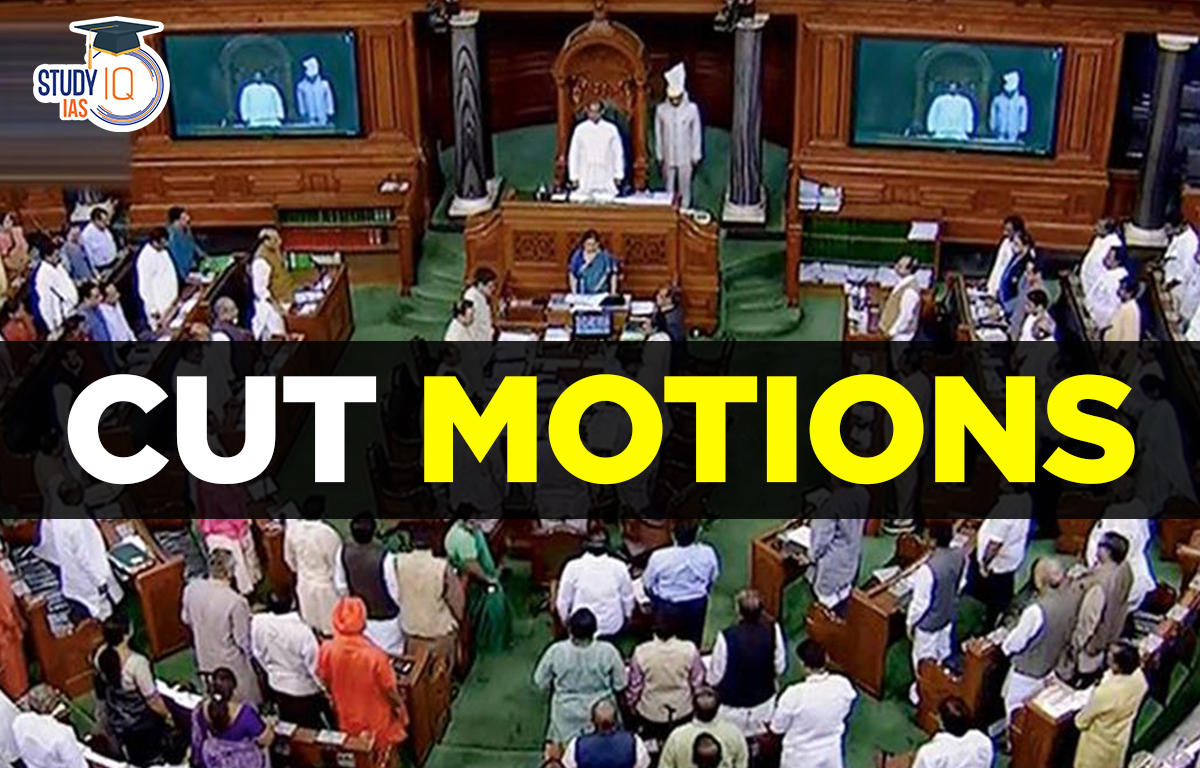Table of Contents
Cut Motions
Cut motions give Lok Sabha members the chance to reject a demand in the government’s financial bill. According to Lok Sabha norms, the government must resign if Parliament votes a cut resolution and it does not have the necessary support. Cut motions thus play a significant role in the Indian Parliamentary system’s checks and balances. The Cut Motions is an important part of Indian Polity which an important subject in UPSC Syllabus. Students can also go for UPSC Mock Test to get more accuracy in their preparations.
Cut Motions Meaning
In order to permit the Lok Sabha members to oppose the financial bill put out by the government, the cut motions might be thought of as a veto power. This is done to lower the monetary demand made by the government for a certain policy or any other area of government activities.
If the government is shown to be at fault or if it is necessary to assess its capacity, this clause may be a useful tool. Similar to motions of no confidence are the cut motions. If a Cut Motion is approved by the chamber and the government does not receive enough support in the lower chamber, it must quit or reform in accordance with the rules. The Speaker of the House has the last say on whether to endorse or reject a cut motion.
Cut Motions Types
There are only three categories in which the moves to cut back on spending fall:
Disapproval of Policy Cut
The demand for the Financial Bill may be decreased to Rs. 1 under this category of motion. This degrading gesture expresses opposition to the demand’s proposed policy. The member who submitted the motion will be required to outline the specific terms of the policy that he considers problematic. All members of the Parliament may participate in the discussion to discuss a policy alternative, but it must only centre on the matters at hand.
Economic Cut
According to this cut, the demand may be decreased by a sum proposed by a member of the Parliament, which would have an impact on the economy. This specific quantity may be a sum of money or a specific item that can be eliminated from the suggested policy. The specific issue that needs to be addressed and the topic of the debate must be stated in the notice opposing the motion. Additionally, it is advised that the speeches stick to the topic at hand and are delivered with extreme precision without introducing any other problems or subjects.
Token Cut
A motion for a symbolic reduction in spending is equivalent to agreeing to deduct an amount from the bill that was not economically essential but was required to air a grievance against a government policy that was stated in the motion. Therefore, it is anticipated that the discussion will be limited to that particular complaint and nothing else.
Cut Motions Admissibility
The motion to reduce the demand amount must meet certain requirements in order to be admissible:
- A cut motion should only make one particular demand, which must be communicated in plain language without resorting to arguing or aggressive language.
- Under a Cut Motion, a person’s moral character or conduct cannot be questioned.
- It is not allowed to repeal or change existing legislation.
- A Cut Motion cannot be used to refer to issues that the Government of India does not have jurisdiction over.
- A Cut Motion cannot be used to fund any expense paid to the Consolidated Fund of India.
- It cannot be connected to a subject that the judiciary is now adjudicating.
- It cannot criticize a privilege in any way, and it cannot go back and revisit things that have already been decided or discussed.
- A Cut Motion is not allowed to discuss issues that are currently being heard by any judicial or quasi-judicial authority. However, the Speaker may allow the discussion of such a matter in the House if he is sufficiently persuaded that it won’t in any way affect how the matter is handled by the judiciary or quasi-judicial bodies.
- A Cut Motion cannot be brought up for petty reasons.
Cut Motions & Role of Speaker
Any cut motion that, in the Speaker’s opinion, is an abuse of the right to move cut motions, is intended to obstruct or negatively affect the House’s procedure, or otherwise violates these rules may be disallowed. The Speaker will determine whether or not a cut motion is admissible under these rules.
Cut Motions Notice
Any member may oppose to moving the motion if notice of the motion to lower any demand for the grant has not been given one day prior to the day on which the demand is being considered, and such objection shall prevail unless the Speaker permits the motion to be made.
Cut Motions UPSC
The definition of a cut motion, the three basic types of cut motions, admissibility laws, and the Speaker’s involvement in all of these are discussed in this article. It should be noted that the notification requesting a reduction in the bill may be contested by a member and may not be approved if it is not produced a day before to the assessment of the demand on the bill. Only in such a circumstance is the Speaker permitted to move the motion. Students can read all the details related to UPSC by visiting the official website of StudyIQ UPSC Online Coaching.





















 WhatsApp
WhatsApp